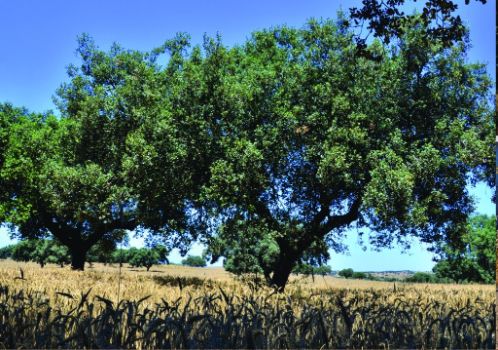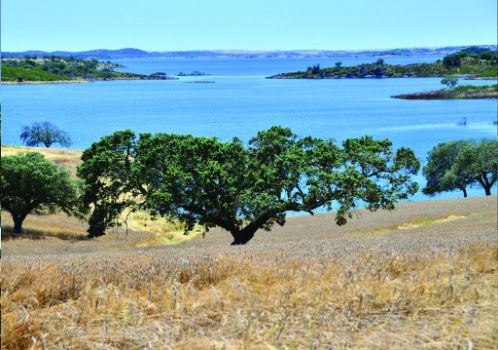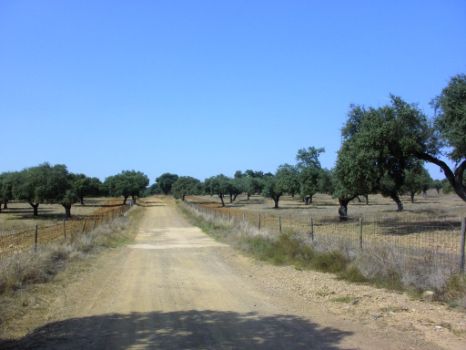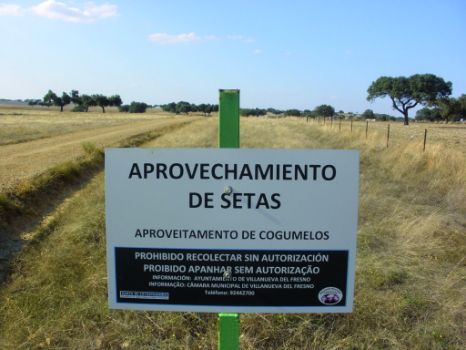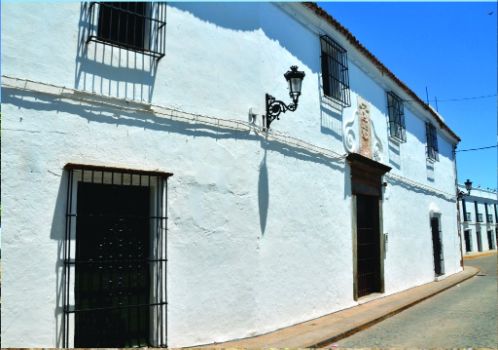Net of Natural
Trails

Stage 40: Circuito Villanueva del Fresno
Description
Por los paisajes de la historia
This Stage, which is 17 km long, includes 12 additional kilometres of an alternative route. There are plenty of prehistoric references throughout the route, as Palaeolithic to Neolithic sites have been found in the Guadiana Valley and in other enclaves.
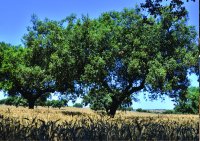
Leaving Villanueva del Fresno behind, and after crossing the EX-107, the road heads towards the Cuncos Castle Viewpoint. The Trail ventures through private farmsteads, surrounded by a landscape shaped by holm (Quercus ilex) and cork oaks (Quercus suber).
The conservation of these oak forests is possible due to the important role of cork in the region's economy, and the use of the dehesas for livestock farming, primarily the Iberian pig. This is a clear example of sustainable development and rational use of natural resources.
The landscape changes to a countryside where cereal is grown, with frequent sightings of Red-legged Partridges (Alectoris rufa), rabbits (Oryctolagus cuniculus) and hares (Lepus europaeus). The terrain is fairly even, and easy to walk.

Past the first five kilometres, the Stage reaches an intersection where it can continue straight ahead, or turn right onto an alternative route, although both routes merge shortly before the end of the Stage.
If one takes the route straight ahead after the first autumn rain, with a little luck, one may find wild mushrooms, which may be harvested with a permit. The Trail sometimes runs along Cuncos Reservoir. The relaxing view from here looks back on the landscape as the route drifts away from the water body.
As the route advances, the Trail fords several streams that run dry in summer using different types of crossings.
About 1.4 km from the endpoint, the Trail merges with the alternative route. The Stage ends at an enclave known as Cuncos Castle, located between the namesake creek and the River Guadiana. The remains belong to a primitive Muslim settlement, whose buildings were probably built on the remains of earlier civilizations. Breath-taking views of the small Cuncos Reservoir can be seen from the viewpoint. Countless sports activities are practiced here by fishing, hunting and hiking enthusiasts.
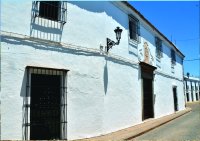
If one takes the alternative route to Cuncos Castle, the path continues straight ahead at the first two intersections, and turns left at the third. At the right time of the year, wild mushrooms may be harvested along this alternative route, always with a permit. As the route heads onwards, one can see numerous partridges and rabbits, and, on the horizon, one can enjoy the spectacular flight of the Black Kite (Milvus migrans).
Other species commonly sighted in this area are Common Crane (Grus grus), Northern Lapwing (Vanellus vanellus), Great Bustard (Otis tarda), Little Bustard (Tetrax tetrax), and Grouse (Pterocles ssp.), as well as domestic livestock such as sheep and goat. This stretch of the route is also mostly flat. The route traverses through a landscape of dehesas and countryside, conveniently marked intersections, fords and cattle grids, until it reaches the intersection where the path merges with the main route described above.
Sites of interest
Profile
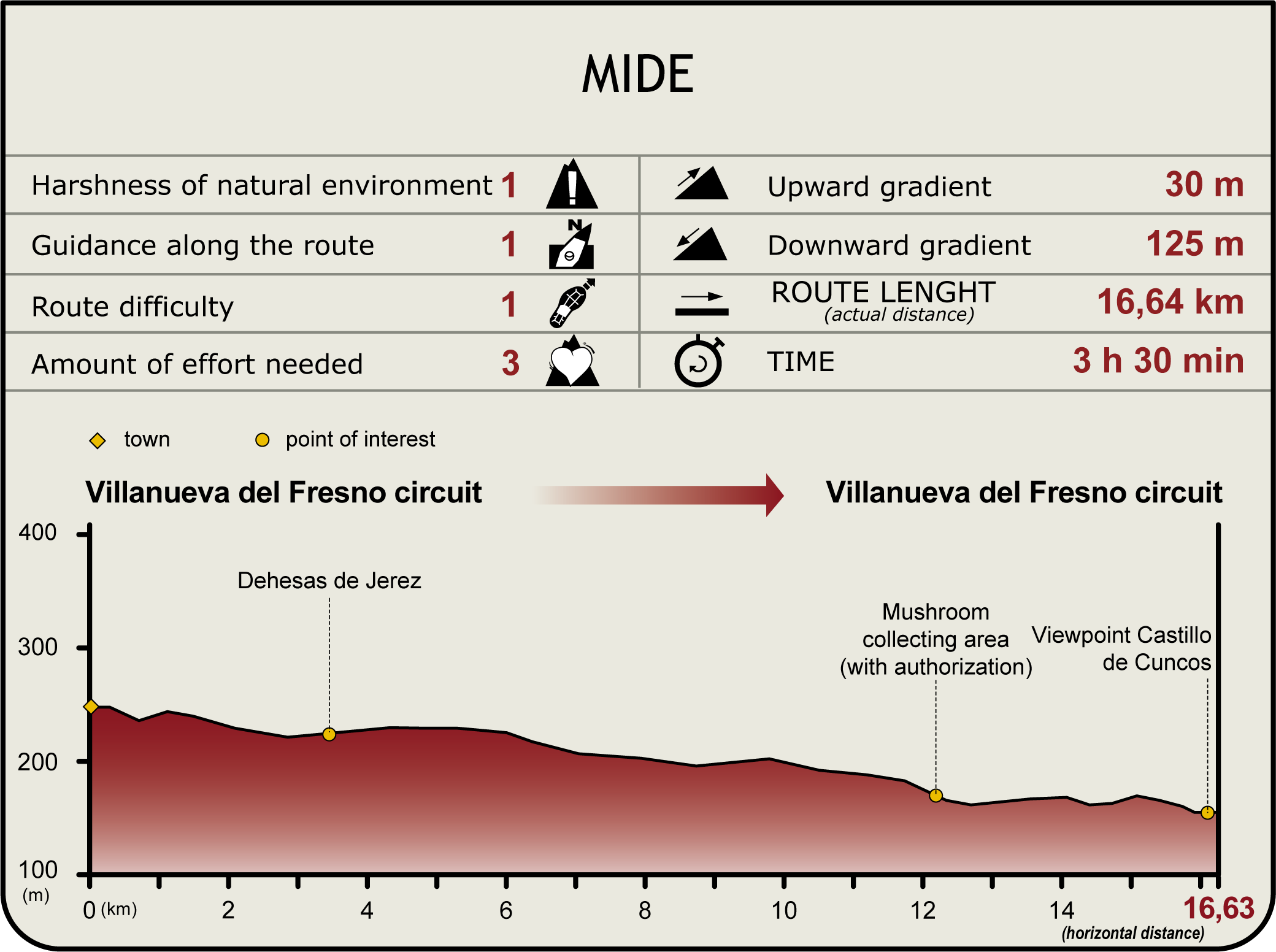
Highlights
Further information
Dehesas de Jerez
"Dehesas de Jerez" has been designated as a Special Protection Area for Birds (SPA) and a Site of Community Importance (SCI). It covers 48,000 ha, of which over 60% are extremely well-preserved holm and cork oak formations. The remaining 40% is mostly natural pastures and croplands, surrounded by dehesas that are more open. Although the Black Stork (Ciconia nigra), is the most representative bird of the dehesa, steppe birds also abound in the area, including the Great Bustard (Otis tarda), Little Bustard (Tetrax tetrax) and Grouse (Pterocles sp.). Furthermore, numerous waterfowl concentrate at Cuncos Reservoir. It is used as a wintering site by the Common Crane (Grus grus), where more than 2,000 cranes can concentrate in large flocks.



